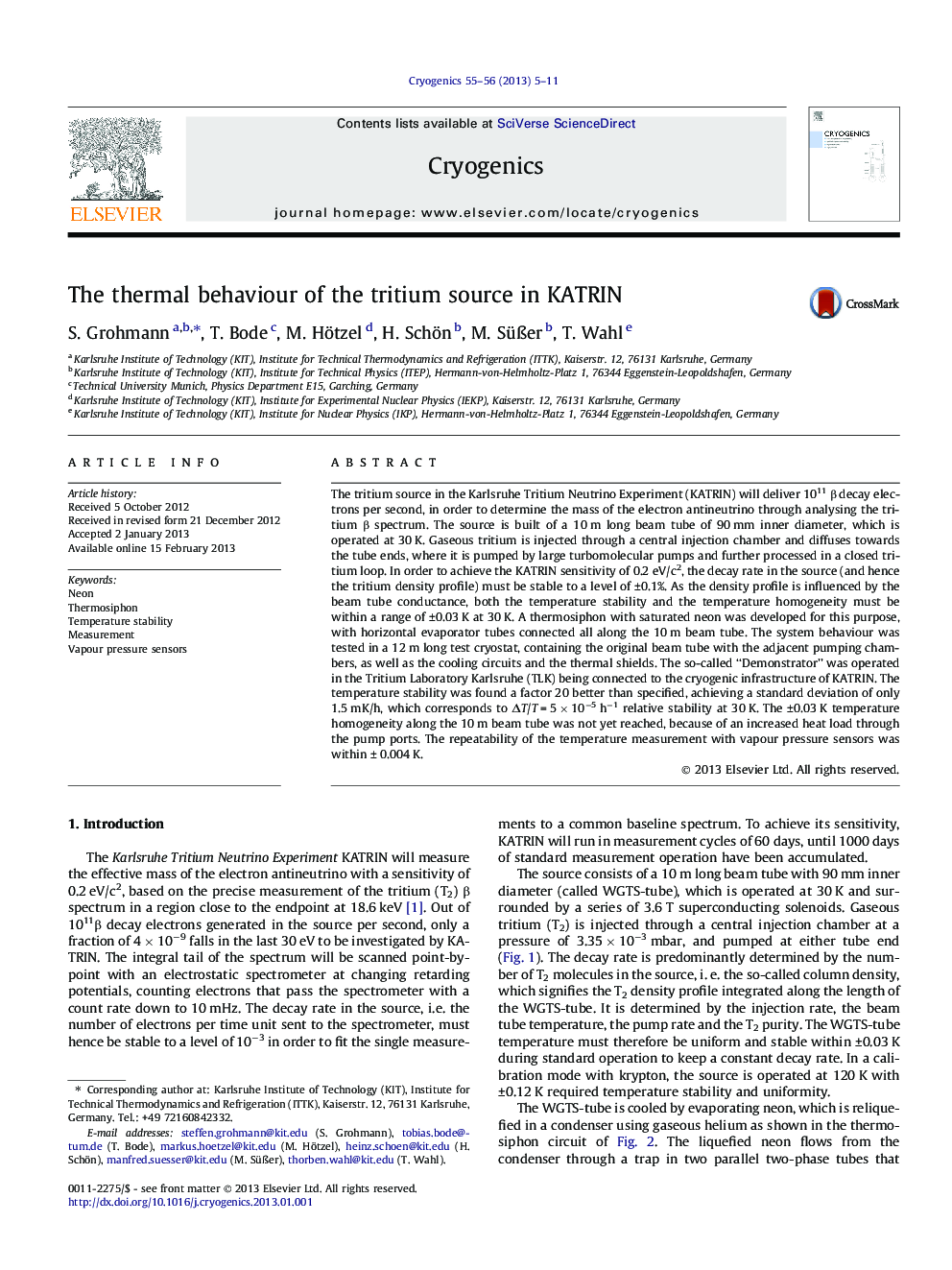| کد مقاله | کد نشریه | سال انتشار | مقاله انگلیسی | نسخه تمام متن |
|---|---|---|---|---|
| 1507593 | 1511056 | 2013 | 7 صفحه PDF | دانلود رایگان |

The tritium source in the Karlsruhe Tritium Neutrino Experiment (KATRIN) will deliver 1011 β decay electrons per second, in order to determine the mass of the electron antineutrino through analysing the tritium β spectrum. The source is built of a 10 m long beam tube of 90 mm inner diameter, which is operated at 30 K. Gaseous tritium is injected through a central injection chamber and diffuses towards the tube ends, where it is pumped by large turbomolecular pumps and further processed in a closed tritium loop. In order to achieve the KATRIN sensitivity of 0.2 eV/c2, the decay rate in the source (and hence the tritium density profile) must be stable to a level of ±0.1%. As the density profile is influenced by the beam tube conductance, both the temperature stability and the temperature homogeneity must be within a range of ±0.03 K at 30 K. A thermosiphon with saturated neon was developed for this purpose, with horizontal evaporator tubes connected all along the 10 m beam tube. The system behaviour was tested in a 12 m long test cryostat, containing the original beam tube with the adjacent pumping chambers, as well as the cooling circuits and the thermal shields. The so-called “Demonstrator” was operated in the Tritium Laboratory Karlsruhe (TLK) being connected to the cryogenic infrastructure of KATRIN. The temperature stability was found a factor 20 better than specified, achieving a standard deviation of only 1.5 mK/h, which corresponds to ΔT/T = 5 × 10−5 h−1 relative stability at 30 K. The ±0.03 K temperature homogeneity along the 10 m beam tube was not yet reached, because of an increased heat load through the pump ports. The repeatability of the temperature measurement with vapour pressure sensors was within ± 0.004 K.
► Successful test of a thermosiphon cooling system for the tritium source in KATRIN.
► Precise temperature control over a wide range in the two-phase region of neon.
► Damping of temperature fluctuations by two orders of magnitude with a passive system.
► Temperature stability of ±1.5 mK/h measured, equivalent to ΔT/T = 5 × 10−5 h−1 at 30 K.
► Verification of the measuring concept with vapour pressure and Pt500 sensors.
Journal: Cryogenics - Volumes 55–56, May–July 2013, Pages 5–11